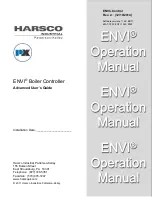
Low-Power Mode
1664
SPNU563A – March 2018
Copyright © 2018, Texas Instruments Incorporated
Serial Communication Interface (SCI)/ Local Interconnect Network (LIN)
Module
29.4.3 Wakeup Timeouts
The LIN protocol defines the following timeouts for a wakeup sequence. After a wakeup signal has been
sent to the bus, all nodes wait for the master to send a header. If no synch field is detected before 150 ms
(3,000 cycles at 20 kHz) after wakeup signal is transmitted, a new wakeup is sent by the same node that
requested the first wakeup. This sequence is not repeated more than two times. After three attempts to
wake up the LIN bus, wakeup signal generation is suspended for a 1.5 s (30,000 cycles at 20 kHz) period
after three breaks.
NOTE:
To achieve compatibility to LIN1.3 timeout conditions, the MBRS register must be set to
assure that the LIN 2.0 (real-time-based) timings meet the LIN 1.3 bit time base. A node
triggering the wakeup should set the MBRS register accordingly to meet the targeted time as
128 Tbits × programmed prescaler.
The LIN controller handles the wakeup expiration times defined by the LIN protocol with a
hardware implementation.
29.5 Emulation Mode
In emulation mode, the CONT bit determines how the SCI/LIN operates when the program is suspended.
The SCI/LIN counters are affected by this bit during debug mode. when set, the counters are not stopped
and when cleared, the counters are stopped debug mode.
Any reads in emulation mode to a SCI/LIN register will not have any effect on the flags in the SCIFLR
register.
NOTE:
When emulation mode is entered during the Frame transmission or reception of the frame
and CONT bit is not set, Communication is not expected to be successful. The suggested
usage is to set CONT bit during emulation mode for successful communication.
















































